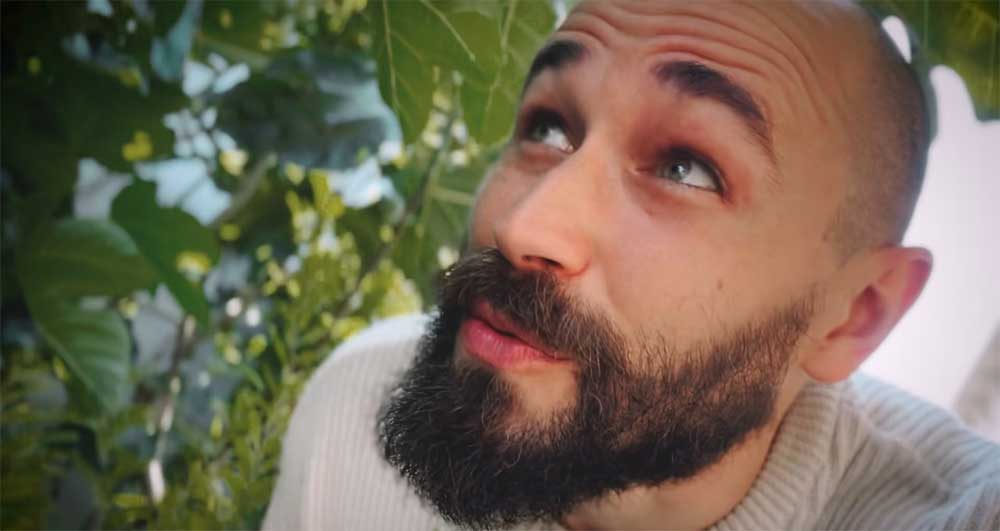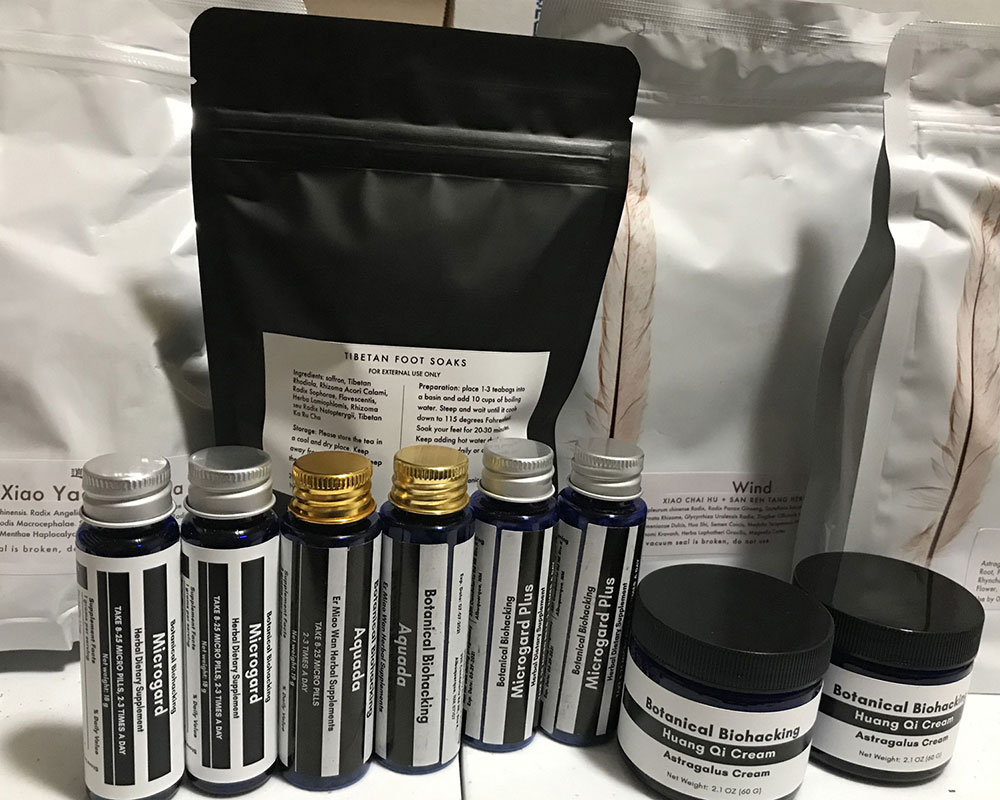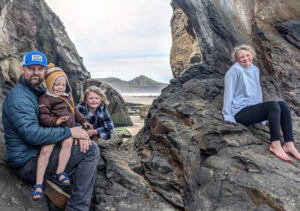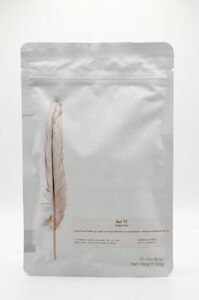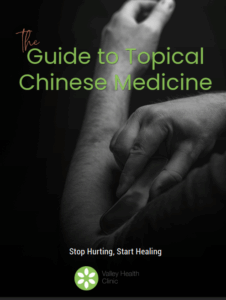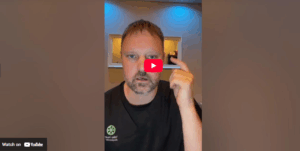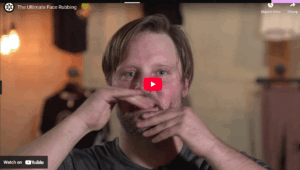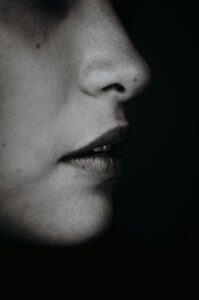An interview between Jeremy Cornish and Willard Sheppy: A person-focused method
Welcome to this exclusive interview between Jeremy Cornish and Willard Sheppy. Jeremy is a renowned expert in the treatment of complex chronic conditions using Traditional Chinese Medicine and the founder of Modern Vitality, while Willard is an accomplished acupuncturist and founder of Valley Health Clinic, specializing in sports acupuncture. Both experts have dedicated their careers to helping individuals achieve optimal health and well-being.
In this interview, we will delve into Jeremy’s and Willard’s expertise in the field of acupuncture and Traditional Chinese Medicine. They will discuss the benefits of alternative medicine, particularly in the use of topical medicine use for injuries. We will also discuss the importance of treating the root cause of illness and focus on appropriateness and clinical clarity in the decision-making process
We make available natural products that have been observed to make a difference in the lives of our patients, friends and family. You’re in good hands shopping with us.
Quick Links to the Sections Below
Question: Jeremy, What topicals do you use?
One of the major mistakes we can make in the profession is to focus on things (our tools, herbs, protocols, etc) instead of focusing on the person and their problem/goal.
Various topicals make sense in varying situations depending on the person and the problem.
I’ve used premium herbal foot soaks, liniments, “secret” martial art lineage hit formulas…
And I’ve also improvised poultices when out hiking in the middle of nowhere by chewing up herbs like dandelion and plantain and applying the wet paste to the injured area.
In choosing which topicals to use, the primary thing I keep in mind is appropriateness. It has to be the right formulation for the situation. Then quality, which is extremely important. But quality is a second place because even the highest quality can’t make up for being the inappropriate/wrong formula entirely.
Question: Jeremy, How do you decide which product to use?
In deciding how to use one product over another, it really comes down to having a clinical algorithm for decision-making.
Most practitioners collect “heuristics,” which are rules of thumb. “X remedy is good for Y problem” It’s a matching type of thinking.
When we organize all of our heuristics, we can start to create clinical algorithms which are much more comprehensive and robust.
Algorithms use more of an “if, then” type of framework. The treatments live at the ends of a robust decision tree.
Using the diagnostic process of Eastern medicine, we can start to figure out which topicals are most appropriate for any given situation.
Question: Willard, How does a Sports Acupuncturist make a diagnosis to understand which topicals are appropriate?
Traditional Chinese Medicine is based on the principles of balance and harmony, and it focuses on treating the root cause of illness rather than just the symptoms. TCM has a unique approach to diagnosing and treating pain, which is based on the quality of the pain.
In TCM, the quality of the pain is considered an important diagnostic tool. Practitioners ask patients questions about the type and quality of their pain, including how it feels, where it is located, and what makes it better or worse. The answers to these questions help the practitioner to determine the underlying pathology and create an appropriate treatment plan.
Stage One
The initial stage of an injury is usually dominated by heat. The duration of this stage varies from a few days to several weeks, depending on the severity and type of injury. The treatment approach involves clearing heat and toxins, dispersing stasis, and relieving pain. The formulas used in the first stage of injury are the coldest formulas and aim to eliminate heat toxins while facilitating the removal of damaged tissue.
Heat
Pain that is warm to the touch and maybe inflamed is often associated with heat. Heat is usually accompanied by localized redness, but in some cases, patients may feel a sensation of heat without visible redness. This type of pain may have a burning sensation.
Treatment typically involves clearing the heat with acupuncture, herbs, and other modalities.
The herbal formula known as Evil Bone Water is a well-balanced composition that exhibits both cooling and warming properties. Its versatility makes it suitable for treating acute injuries, as well as for long-term use.
In contrast, San Huang San, also referred to as herbal ice, is a very cooling formula that is recommended for use only during the first week of an injury. It is not advisable to use this formula for an extended period due to its potency.
Stage Two
The second stage of trauma occurs after the initial inflammation subsides, leaving behind blood stagnation and qi stagnation, which presents as congestion of swelling and fluids in the affected area. This congestion leads to stiffness and pain. If the injury was severe or not treated sufficiently during the first stage, swelling may persist.
The second stage of trauma requires a treatment approach similar to the first stage, but with a greater focus on moving blood and dispersing stasis than on clearing heat. Herbs are added to dispel wind and dampness to prevent these pathogenic factors from becoming chronic bi syndrome. Blood stasis is a constant factor in traumatic injuries, resulting from primary vessel damage, extravasation, pressure from swelling, and increased adhesion. The goal of dispersing stasis in the second stage is to alleviate pain and facilitate tissue regeneration in the third stage.
Blood Stagnation
Sharp and stabbing pain that is fixed in location is often associated with blood stagnation. This type of pain is usually worse with pressure and may have a burning or electrical sensation. Treatment typically involves moving the blood and resolving the stagnation with acupuncture, herbs, and other modalities.
Qi Stagnation
Dull, achy pain that is tight or tense and better with movement is often associated with Qi stagnation. This type of pain may also feel better after moving around. Treatment typically involves moving the Qi and resolving the stagnation with acupuncture, herbs, and other modalities.
Both Evil Bone Water and Red Emperor’s Immortal Flame have a rich history and origin in Martial Arts Trauma Liniments, which have been used for centuries to address a wide range of injuries, pain, and discomfort.
These two formulas are highly effective in moving qi and blood,
Evil Bone Water is a well-balanced formula that combines cooling and warming properties, making it highly effective in treating most injuries, while Red Emperor’s Immortal Flame is a warming formula that is ideal for conditions aggravated with cold.
Both Evil Bone Water and Red Empeor’s Immortal Flame have there roots in Martial Arts Trauma Liniments and are good and moving qi and blood.
Cold Stagnation
Sharp and stabbing pain that is fixed in location and worse in cold weather is often associated with cold stagnation. This type of pain may also have a cold sensation or the skin my have a white hue. People with cold stagnation will have a natural avoidance to putting ice on injury or using topicals with a cooling menthol sensation. Treatment typically involves warming the area with acupuncture, herbs, and other modalities.
Red Empeor’s Immortal Flame is a renowned Traditional Chinese Medicine formula that is widely used for its warming properties, which make it ideal for treating Cold Stagnation. Unlike other liniments that may have a cooling effect, Red Empeor’s Immortal Flame is designed to provide warmth to the affected area, making it a great choice for individuals who do not respond well to cooling sensations like mentho
Tibetan herbal foot soaks have been used for centuries to treat a wide range of conditions, including cold injuries. The unique blend of herbs used in the foot soak has a warming effect on the body and helps to improve circulation, which can be especially beneficial for individuals who suffer from cold extremities or injuries caused by exposure to cold temperatures. In addition to its warming properties, the foot soak also has anti-inflammatory and pain-relieving effects that can help to reduce swelling and discomfort. Overall, Tibetan foot soaks are a safe and effective way to promote healing and provide relief for a variety of cold-related injuries and conditions.
Stage Three
At this stage, your body has fibrous deposition (scar tissue) and possible chronic inflammatory reactions. To remodel is to grow by rapid production, and that is exactly what your body is going through during this stage. The visible signs of inflammation will subside, and new tissue forms. This new tissue is fragile, and susceptible to injury.
It is during this phase that people feel like their mind is ready for them to be better, but their body is lagging behind. Oftentimes, remaining bruising, swelling and limited range of motion can bring about a sense of depression.
The fear that tends to arise during this phase of healing can cause you to guard the area even further. You may be scared to move too much, and this anxiety can cause you to lock down and stay still in order to protect yourself. This fragile new tissue, however, is susceptible to more than just injury – it is also susceptible to stagnancy, and restricting movement can form adhesions. These adhesions can limit range of motion when movement is eventually reintroduced, so appropriate mobilization of the tissue during this stage is important.
The benefit of working with your acupuncturist lies in their knowledge of what will and won’t be best for you. Some people close down, and we remind them to get out and move. Some people push themselves too far too fast, and we remind them to slow down and allow themselves to heal. Your greatest benefit lies in getting answers to your questions, and support to get through your fears and anxieties.
Rehabilitative exercises during this stage place increased demands on the tissues and some patients may have difficulty in performing the exercises due to tension in a sinew channel.
The treatment principles of this stage include: strengthening and warming the sinews and bone, tonify gi and nourishing blood, activating qi and blood, dispersing residual swelling, promoting tissue healing and decreasing pain. As always, these formulas must be prescribed for the appropriate CM presentation according to a thorough differential diagnosis.
Blood Deficiency
Dull, achy pain that is weak or stiff and worse with exertion and better with rest is often associated with blood deficiency. Treatment typically involves nourishing the blood with acupuncture, herbs, and other modalities.
Qi Deficiency
Mild, dull, achy pain that is weak and worse with exertion and better with rest is often associated with Qii deficiency. Treatment typically involves tonifying the Qii with acupuncture, herbs, and other modalities.
Corydalis relief stick is an effective and gentle formula that can be used to alleviate pain in patients who are weak or sensitive to stronger pain relief methods. One of the main benefits of using this formula is that it helps to decrease pain in patients who have a deficiency of Qi and Blood. This can be particularly useful for patients who have undergone chemotherapy and are experiencing pain as a result of the treatment. Many patients find that traditional pain relief methods such as Evil Bone Water and Red Emperor’s Immortal Flame can be too strong for their sensitive systems. The Corydalis relief stick provides a milder yet effective alternative, making it a valuable addition to any holistic pain relief regimen. Overall, the Corydalis relief stick has proven to be an invaluable resource for practitioners looking to provide gentle yet effective pain relief for their patients.
Dampness
Heavy pain is often associated with dampness. This type of pain may also have a sensation of swelling or numbness. Treatment typically involves resolving the dampness with acupuncture, herbs, and other modalities.
Wind
Moving, itchy pain is often associated with wind. If blood deficiency persists for a long period of time, it can lead to wind, which can cause pain that travels or moves around.
This type of pain may also be accompanied by tingling or numbness. Paresthesia is often related to the presence of wind in the jing luoTreatment typically involves dispelling the wind with acupuncture, herbs, and other modalities.
Corydalis relief stick is my go-to product for Nerve pain.
Tibetan foot soaks work very well for neuropathies, and also more internal conditions like chronic pain and menstrual problems when combined with other therapies and a comprehensive plan.
Question: Jeremy, What are some other examples of the right topical for the right situation?
When you use the right topicals for the situation, you’ll see the appropriate results.
For example, one obvious distinction is broken skin.
There are some liniments and other topicals that are fantastic to use, but only on unbroken skin.
So if the skin is broken, we really ought to start with something more appropriate.
For example, if it’s broken skin from a cut or scrape Yunnan Pai Yao is fantastic. When there’s bleeding from a wound, I’ve used Yunnan Pai Yao to stop the bleeding swiftly.
If it’s broken skin from a burn, then shiunko, zi cao, or even the old reliable Chung Wang Hun can work wonders . Burns responds extremely well to herbal burn cream. Especially reducing the pain, speeding the wound healing, and minimizing scar damage. This is quite reliable.
We need to be able to triage the situation and figure out the urgency of what’s going on. Is it a first-aid situation?
For example, one of my kids was wearing shorts and brushed up against a bunch of stinging nettles out in a field. His calf was red, painful, and welting up.
A formula like San Huang San makes a great poultice in that situation, however, it was much faster for me to chew up a bunch of fresh dandelion and then smear the poultice and the juice onto his leg for immediate relief right there. Poultices like San Huang San work reliably well for fresh injuries with closed skin like an acute sprain etc, when there’s redness and swelling. Also, anything similarly inflamed, such as mastitis.
If he had been bleeding, I would have chosen plantain.
Tibetan foot soaks work very well for neuropathies, and also more internal conditions like chronic pain and menstrual problems when combined with other therapies and a comprehensive plan. That’s the kind of work I do at Modern Vitality. Complex chronic conditions.
Evil Bone Water is great for sports injuries with closed skin. It has other uses too that are a bit more advanced, including oral and certain broken skin issues.
Yin Care works exceedingly well for yeast infections. There’s another company offering a similar formulation called Kuan Yin Apothecary Yoni Wash which I’m interested in as well.
Martial Arts liniments and other Dit Da formulations are usually pretty good at whatever they’re designed for. For example, some of the very warming liniments can be great for chronic injuries that are worse with cold.
Patients can soak their feet in Ginger tea for general coldness, and pain, and when coming down with a cold.
Most liniments are great for taking the sting out of mosquito bites.
Conclusion
In conclusion, Traditional Chinese Medicine has a unique approach to diagnosing and treating pain based on the quality of the pain. By asking yourself questions about the type and quality of the pain, you can better understand the underlying pathology and pick an appropriate topical and treatment plan for you.
Jeremy Cornish
Jeremy Cornish is a renowned expert in the field of Traditional Chinese Medicine. He is the founder of Modern Vitality, an international group that helps people with complex chronic health conditions, and the Damn Good Doctors Club, a community of practitioners with non-linear practice models. Cornish has spent over two decades studying and practicing Traditional Chinese Medicine, and has helped countless individuals achieve optimal health and wellbeing.
Will Sheppy
Willard Sheppy is an accomplished acupuncturist and founder of Valley Health Clinic, a medical facility that provides comprehensive healthcare services to patients in Albany, Oregon. With over 15 years of experience in the field of acupuncture, Willard has established himself as a leading expert in Sports Acupuncture. He is known for his compassionate and personalized approach to patient care, and his dedication to helping his patients achieve optimal health and Sport Performance Goals.
About the Author
Willard Sheppy is a writer and healthcare practitioner who seamlessly melds scientific knowledge with practical applications in engaging and authoritative articles. He holds a Bachelor of Science in Environmental Science from Oregon State University and a Master’s in Acupuncture and Oriental Medicine from the distinguished Oregon College of Oriental Medicine.
In his work, Willard skillfully combines his extensive educational background in scientific research with his practical experience as a healthcare practitioner. Willard balances his life with martial arts and cherished family adventures. As a father of three, he often leads his family on camping and hiking trips along the breathtaking Oregon coast.
Connect with Willard on LinkedIn at linkedin.com/in/valleyhealthclinic or learn more about his services at valleyhealthclinic.com. Embark on this journey towards holistic health with Willard!

